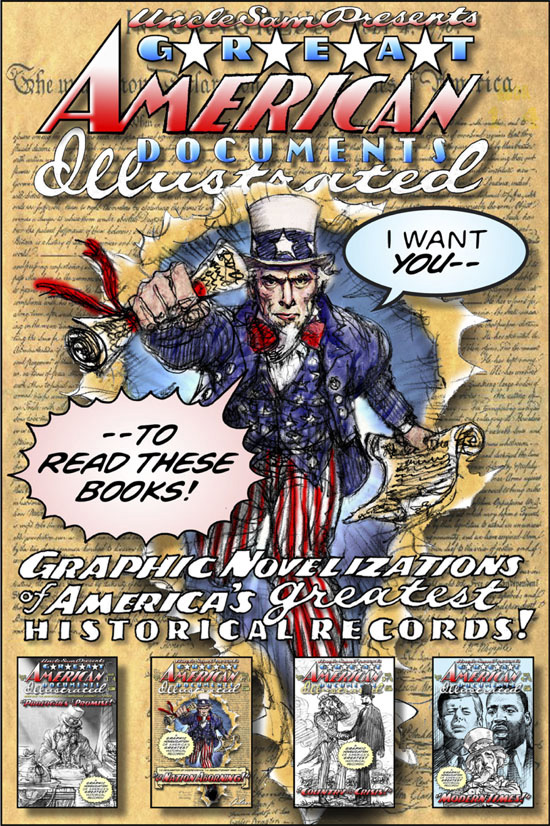
It was more than three years ago when Hill & Wang publisher Thomas LeBien told me that he wanted to do a graphic history volume that told the story of America through its most important documents, and asked me if I was interested in taking on the assignment. Of course I said “yes.”
I knew that I wanted to narrate the stories with a character, mostly because history books with omniscient narration are, basically, textbooks. This was to be an ancillary text, enrichment on the subject, and so I wanted someone to tell the stories and walk the readers through the living corridors of our history.
Initial false starts included using a bookworm or a mouse to narrate, the idea being that one was stuck in the Library of Congress and bored, and so begins to read some of the vast trove of historical documents the LoC contains. But that skewed too young; the book is aimed at students in grades 9 through 12, as well as a general adult audience.
I asked longtime comics historian and illustrator Arlen Schumer to do some spec work for the project. We batted a few ideas around, and then I said, “You know what, give me Uncle Sam bursting through the Declaration of Independence, looking at the readers, like he does in James Montgomery Flagg’s famous recruiting poster, and saying “Read this book!” Arlen ran with the concept and did a brilliant series of cover roughs. (Unfortunately, H&W decided not to use them . . . but that’s a different story for another time.)
Now I had my embodied narrator to take us through American history. I spoke with several agents about writers and illustrators, and a couple of young, talented people were recommended. I even sent one a contract, but ultimately it didn’t work out—we had differing visions for the book.
So I told the publisher I was thinking of asking Ernie Colón to illustrate. Ernie had already done a bestselling volume on the 9/11 Commission Report for H&W with Sid Jacobson. And to script, I suggested Ernie’s wife, author and teacher Ruth Ashby (who was my first editor in books when I made the switch over from periodicals). Although Ruth had never scripted a graphic continuity before, she is intimately familiar with the field, and had already done many books on various aspects of American history.
Ruth and Ernie had never worked together on a graphic project before. How did it all work out? Well, the simple answer is “Buy the book and see.” But the short answer is “Splendidly!” And the reviewers seem to agree.